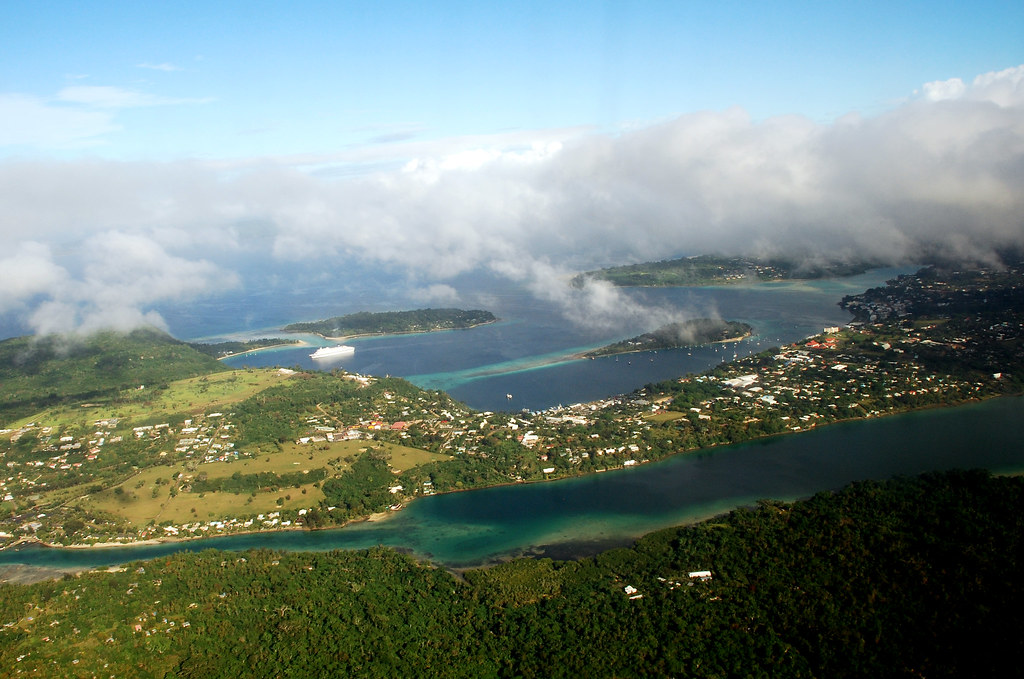I love it when a new visitor arrives on Twelve Mile Circle from a previously unrepresented geographic location. Now I can focus on another spot on the globe while simultaneously carving a new notch on my visitor map. So today the South Pacific island nation of Vanuatu checked in!

Some of you are probably thinking, “enough with the visitors already… let’s get back to the geo-oddities”. Well, for those folks I’ll offer a few words of comfort. Unrepresented countries on this website are now pretty rare. This means the chance of recording new visitors decreases correspondingly. Logically as a result, I’ll find fewer opportunities to do this in the future.
Also, I have plenty of oddities sitting in the hopper waiting for future articles. No worries, we’ll get back to them soon enough. In the meantime I hope you’ll forgive my relentless need to count things.
What About Vanuatu?
Vanuatu occupies a volcanic archipelago situated northeast of Australia, southeast of New Guinea and west of Fiji. It became the Republic of Vanuatu (Ripablik blong Vanuatu), an independent nation, in 1980. For much of the Twentieth Century however, people called it the New Hebrides. Britain and France administered Vanuatu through one of the rarest forms of government in existence, a condominium. That’s a situation where two or more sovereign nations share equal domain over a single territory.
A Condominium is an unwieldy form of government and it often breaks down under its own weight. That’s why very few of them exist today in any meaningful form. We’ve discussed a couple of these previously including one between Luxembourg and Germany and another between France and Spain. However it reached particular heights of absurdity in the New Hebrides.
That situation no longer exists here, of course. Nonetheless, English and French continue to be official languages along with Bislama (a form of Creole English). They all compete with more than 100 indigenous languages spread throughout the archipelago. It’s a place “with the highest density of languages per capita in the world.”
Only about 250,000 people live in Vanuatu, strung along four primary islands and many of its 80 smaller islands. It’s also pretty small geographically with 12,189 square kilometres of land, placing Vanuatu at 163rd on the list of nations by size That’s slightly larger than the U.S. state of Connecticut for the benefit of my blogger friend from CTMQ.
It’s amazing that a visitor from Vanuatu came to the website as I think about the situation. It’s a small, primarily non-English speaking nation spread amongst a string of islands with minimal Internet connectivity outside of a handful of the larger towns.
Let’s Drill Down on Port Vila
Specifically my mystery visitor arrived from a location in Port Vila, the capital city (map).

Port Vila is also the largest city in Vanuatu with a population of probably 30,000-40,000 people. It is also the economic engine for the nation. A campus of the University of the South Pacific is located there, which undoubtedly hosts a number of well-educated, English-proficient students. It also contains the seat of government as well as commercial centers. This implies a higher probability of English speakers at least as a secondary language. Port Vila would be a logical guess for a website visitor from Vanuatu, and indeed that’s the case.

Leave a Reply